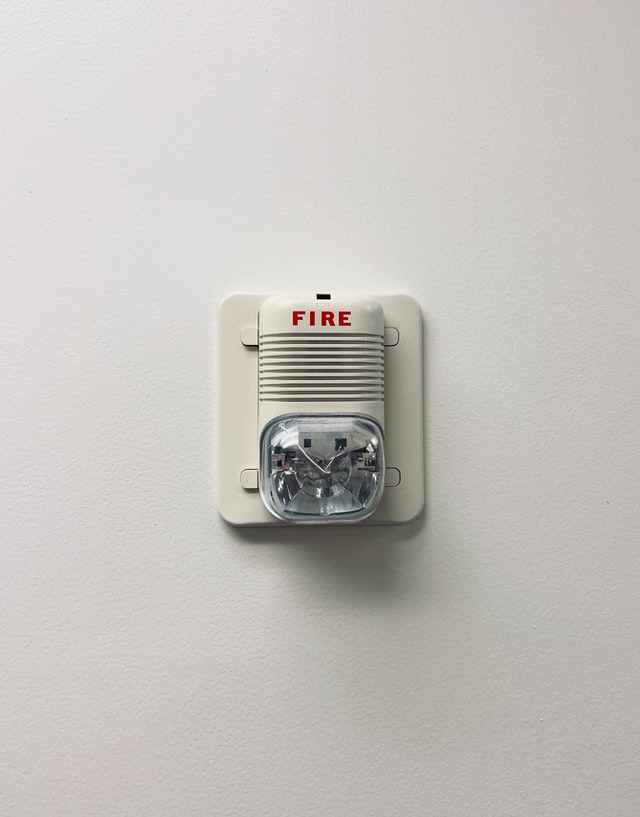Renting a new place to live is an exciting time. You’ll get to enjoy a new location, new people, sites, food, all kinds of things that are engaging and healthy. Making sure that your new rental remains a happy experience can depend on some factors that aren’t under your control, but there’s a lot you can do to ensure that your finances and efforts are safeguarded. A rental inspection protects the landlord and tenant, helping both parties make sure that the property is as it was described and stays in good condition throughout the tenancy. Inspections occur upon moving in and out, and exact specifics will vary based on location, but most include some standard elements. Some of these elements are critical and not customarily overlooked. However, others can be a little easier to slide by, but in the end, they can benefit you as the tenant when you complete your move-out inspection.
It’s important to note that there are a wide variety of types when it comes to inspections. While they might be performed by the same person, they are unique enough to warrant a distinction. However, the key difference between rental and home inspections is that when it comes to the home, the buyer or owner pays to have it done to ensure there are no significant issues with their potential new property or the property they are selling. Conversely, a landlord or property manager does a rental inspection with a tenant prior to turning the property over to the tenant. A rental inspection is often referred to as a walk-through, as well, and tends to be less exhaustive than the former, depending on the inspector, of course.
The structure and formality of your rental inspections can vary a lot based on whether you’re renting from a private landlord or a property management company. Property management companies are full-time landlords and generally have much more rigorous and formal inspection checklists than individuals that own an income property or two. They want good reviews and quality tenants, so they go out of their way to make sure that they’re choosing the right people, and part of the way they do that is through a thorough rental inspection. This isn’t to say that private landlords aren’t conscientious and smart business owners as well; however, it can be a little more up in the air as to what’s included in their inspection both move in and move out.
So, in this article, we’re going to go through several things that you should look for both when you take over a property and when your lease term is over. These will ensure that your money is going to the right places and you’re not being taken advantage of by any dodgy landlords or property management companies.
What Will Happen During Your Move-In Inspection

Many first-time renters will look at a move-in inspection as just checking the boxes. They see it as the landlord’s way of turning over the property, not as their opportunity to catalog any defects. It’s essential to get any issues on record and make sure that they are covered, so you are not blamed for anything that wasn’t caused by you when you moved out.
Rental inspections can be a bit tedious, going over every single detail of your new home square inch by square inch. You’ll be happy, however, to avoid a bill upon your move out for things like damaged drywall and dings in the flooring or other minor imperfections. Sometimes less than honest landlords or property management companies will try to pin these on renters moving out so that they don’t have to pay out of pocket to fix them.
If you’re renting a one-bedroom apartment, your move-in inspection should be a minimum of 30 minutes, if not longer. If you’re renting a detached home, expect your move-in rental inspection to last over an hour. Don’t be tricked into rushing things to save yourself a bit of tedium. You’ll be happy in the end when you’re not paying for every minor blemish in your rental.
Ask if the property has a home warranty, this is not part of an inspection or a requirement, but it’s good to know if they have one. Especially if you’re renting a house with older appliances, you want to make sure to ask your landlord for a home warranty.
A home warranty can cover unexpected repairs or replacements of covered appliances or systems in the rental property. This can allow your landlord to quickly address any issues, reducing the time you have to spend dealing with maintenance problems.
Having a home warranty in place demonstrates that your landlord is taking steps to maintain the rental property and care for their tenants, which can foster a positive relationship between you and your landlord.
Red Flags To Look For

As we’ve mentioned, not every landlord or property management company is out to scam you. These can tell you that someone is trying to move too quickly through the process in a way that could be detrimental to you upon your move-out inspection.
Not going into enough detail. The person going through your rental inspection checklist with you should be hyper-focused on every little detail. It might seem mundane to make a note of a chip in the paint here, a hole from a picture being hung there, scratches on an appliance, or other small things like that. Still, if the person doing your move-out inspection is having a bad day or trying to make up for some losses out of your pocket, they will have that eye for detail, and you’ll wish that you would have cataloged every little item at the start. So, if someone seems to be rushing you through your inspection, hold your ground, be polite but persistent, and make sure you don’t get rushed through your move-in inspection.
Not writing things down during the inspection. The only record you’ll have of something existing before you moved in, like a dent in a corner or a stain on a carpet, will be a written record that exists on your lease. Make sure that every little detail is noted, and both you and your landlord have a copy of the lease with notes made.
Hearing things like, “Oh, we’ll get that fixed after you move in.” While this can be perfectly innocent, it can also be the sign of a lazy or negligent landlord or property manager trying to quiet a potential tenant and gloss over defects in the property. Again, be polite and insist that those things are fixed before you move in or write them down on your lease agreement.
Before Your Move Out Inspection

As a tenant, this is where the tables can turn. You might get lucky and have a landlord who is in a great mood that day, is super understanding of normal wear and tears, or isn’t fussy about small holes from pictures that were hanging. Or, you may get someone who is trying to make some money back on you, is having a bad day, or is just an overly fussy and detail-oriented stickler. While some of this is out of your control, there are things you can do to make it more likely that your move-out inspection will go smoothly.
This may sound obvious but make sure things are clean. Not just that you’re adequately packed up, and there isn’t actual garbage lying around, but that your rental is free of dust, the floors, sinks, toilets, etc., are clean. A little bit of care can go a long way, and if your landlord or property manager sees that you’ve put effort into maintaining a nice clean space, they’ll be less likely to look for issues.
Be upfront about any potential damage that has occurred, and address it before your landlord sees it. You don’t want to give a wrong impression by making it look like you were hiding damage or hoping someone wouldn’t notice. This will put a bad taste in the mouth of anyone going through your rental inspection with you and make it more likely that they’ll look for something to get you for. There’s no need for a dramatic mea culpa — just be upfront if you’ve caused minor damage like a dent in the hardwood floor or a stain on a countertop. Faced with honesty, people will be more understanding than you think (and if they’re not, chances are they would’ve found it and charged you for it anyway.)
Make any minor repairs yourself before your inspection to avoid a headache. As you’re moving out, you’ll likely find that there are small repairs that need to be made. Or, you may also find that you caused minor damage in the course of your move out. Moving is tough! Don’t be too hard on yourself. Minor dents in drywall, scuffs on the floor, or easily fixable things can save you from having to pay extra for repairs after you move out. If you’re not handy at DIY repairs, check out Pinterest, TikTok, or YouTube for tons of small repair tips and tricks that are quick and easy and will save you a lot of hassle in the long run.
During Your Move Out Inspection

Congrats, you made it! You’re all packed up, you’ve cleaned, and probably enlisted the help of a friend or two, and the hard work is done. All you have left is your move-out walk-through. Here are a few tips to make sure the process goes smoothly:
Be on time. Regardless of the reason, you’re moving or your relationship with your landlord or property management company, remember that they hold the fate of your bank account in their hands at this point in the process. You probably don’t have a lot of repairs or significant damage, but small things that cost $50 or $25 can add up quickly, and you don’t want to get off to a bad start by annoying your landlord because you were late.
Remember that while you are responsible for damage caused, life takes a toll, and there is an allowance for regular wear and tear on a property. It can be easy for people who haven’t seen the inside of a property in a year or more to immediately see small areas that have seen some life and love. Most landlords or property managers doing a move-out inspection are prepared for this, but you may need to gently remind someone that daily wear and tear is an expected part of a rental agreement, and you shouldn’t have to pay for every minuscule dent or scratch.
Keep a list of anything that you may need to pay extra for. The last thing you want after you’re free and clear moved out of your old place, and in somewhere new, is to have a discrepancy about how much you may owe for any damage caused.
The moral of the rental inspection story is simple — be thorough, be upfront, and be polite. If you keep the tips from this article in mind when you’re moving into or out of a new property, you’ll be setting yourself up for a smooth and hassle-free process as any move can be!




